
The 15th century was the period of discoveries and upheavals. One of the greatest discoveries was undoubtedly the invention of movable type printing, by Johannes Gutenberg from Mainz.

# 1 Gutenberg Bible Fragment, first printed Book with movable types, Mainz, c. 1455 (sold by JGRB)
Around that time, the whole of Europe was worried about the approaching Judgement Day. People assumed the world would end around the turn of the century. The fifteen last signs that would precede and herald the Apocalypse were an immensely popular motif and can be found in manuscripts, stained glass windows, as well as in printed books. 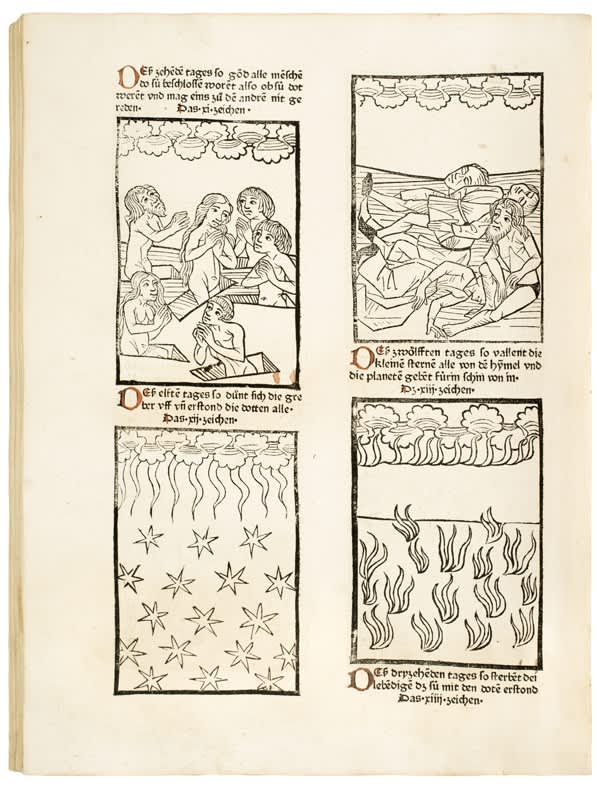
# 2 Speculum humanae salvationis, Basel 1476 (available for sale at JGRB)
Gutenberg’s new “black art” greatly enable the spread of these narratives, and printed leaflets promoting the ominous signs that announced the coming end of the world proved very popular.
A pig with one head, two tongues, four ears, two bodies and eight legs, which was born in Landser (Alsace), was the epitome of a doomsday harbinger. The news about its birth was initially spread by a leaflet printed by the writer and humanist Sebastian Brant in 1496 (GW 5034, ISTC ib01097090). 
# 3 The pig of Landser by Sebastian Brant, (Basel University Library)
The pig became famous through Albrecht Dürer’s engraving produced the same year.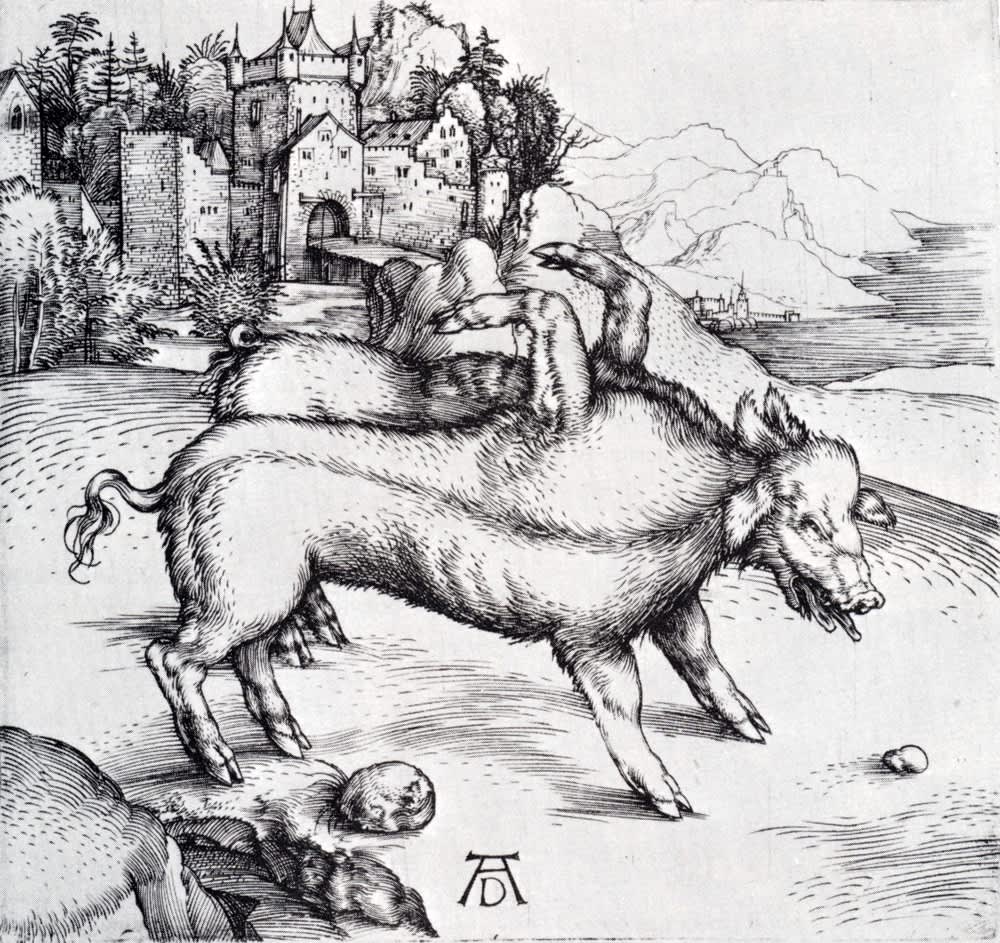
#4 The monstrous pig of Landser by Dürer, (Portland Art Museum)
Even more harrowing was Dürer's interpretation of the Book of Revelation. Dürer illustrated the last chapter of the New Testament, where John of Patmos narrats the last days of mankind, with a set of fifteen excellent woodcuts. 
#5 The Four Apocalyptic Horsemen, A. Dürer Apocalypse, 1511, (sold by JGRB)
Dürer's famous Apocalypse was first published in Anton Koberger's print shop in 1498. The question has often been posed, did Dürer have models or inspirations for this famous Apocalypse? 
#6 The Four Apocalyptic Horsemen, Ninth German Bible, A. Koberger, 1483, (available for sale at JGRB)
Anton Koberger himself had printed a German Bible in 1483 that illustrated the Apocalypse with a set of eight woodcuts. Scholars have sometimes voiced the assumption that Dürer, who is said to have been Koberger’s godson and therefore was frequently in his workshop, knew of the woodcuts for this Bible (GW04307, ISTC ib ib00636000).
Looking at our examples with the four horsemen, Dürer’s monumental masterpiece has little in common with the woodcut in the Nuremberg Bible. However, we see the ghastly Hell Mouth in the lower left corner in both compositions: people prostrate on the ground, tumbling over one another, being sucked into this unspeakable abyss. While Dürer's appalling horsemen sweep in a mad dash over the paralyzed people below, the parade of ghost-horsemen in Koberger’s version appear rather tempered, almost as if they are in retreat and not unwavering deadly attackers.
The layout of the Bible’s woodcuts, where miniatures in landscape format stretch over two columns of text, reflects the influence of the 13th century Anglo-Norman Apocalypse manuscripts tradition. 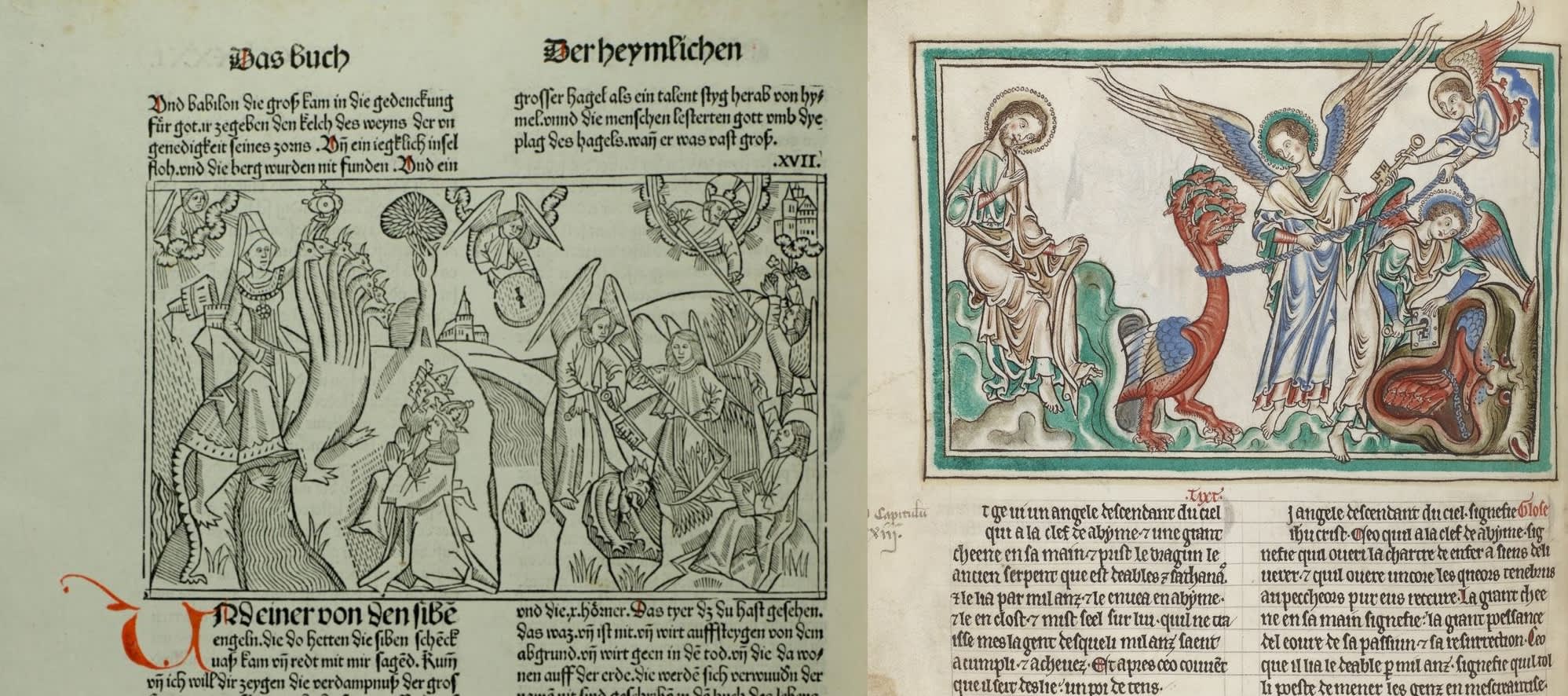
# 7 Left: Ninth German Bible, 1483. Right: Manuscript, BnF, fr. 403, 13th century.
It is interesting to observe that the Koberger Bible, which uses only eight illustrations for the entire Revelation, combines several scenes in one image, while the manuscripts, which usually have much more extensive sets of images regularly show John as a marginal observer of the events.
This concept with John as the observing narrator standing to the side is also realised in Blockbook Apocalypses.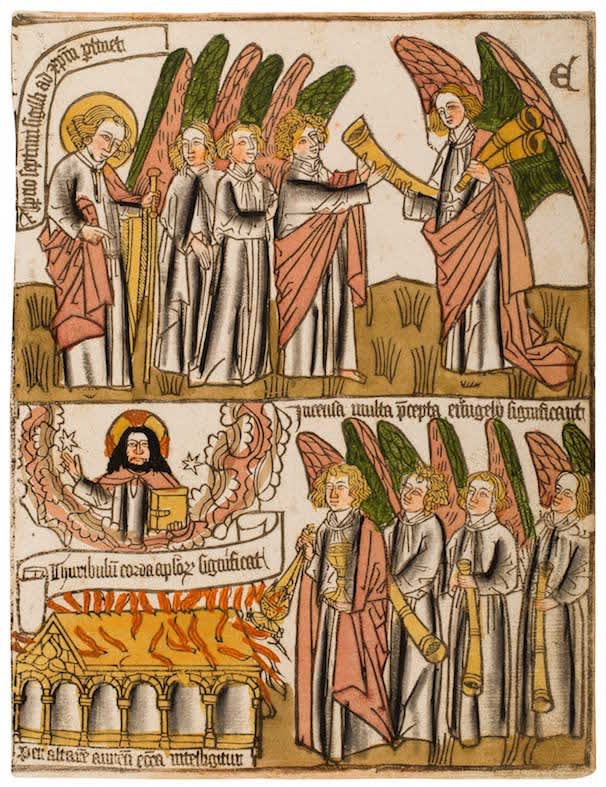
#8 Apocalypse Block Book, single leaf, (available for sale at JGRB)
In Dürer's Apocalypse we also find several events of John’s Revelation merged into one fantastic composition. 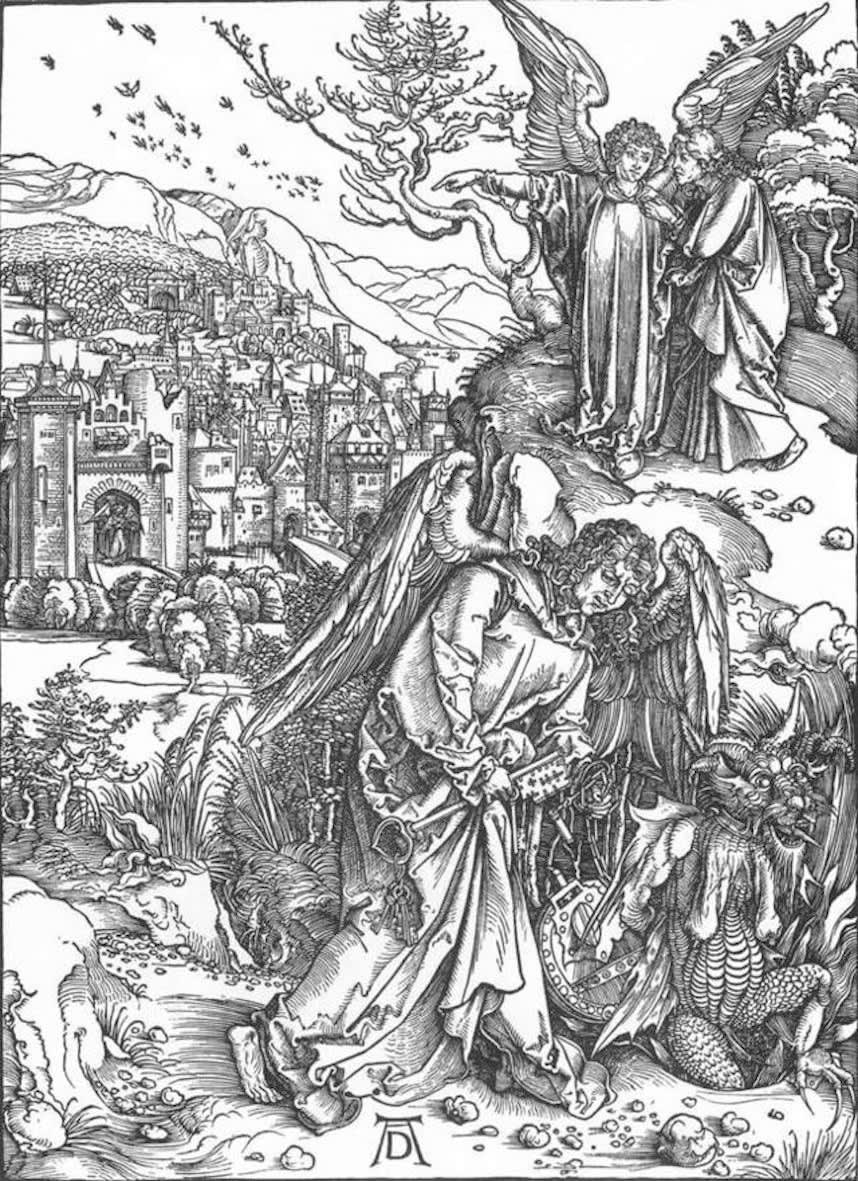
# 09 An angel locks Satan away, A. Dürer (sold by JGRB)
In this last woodcut of Dürer’s Apocalypse, for instance, we are confonted with a scene, that corresponds with the Ninth German Bible and the above shown manuscript fr. 403 (fig. 7): an Angel holds Satan in chains and exiles him for 1000 years in a bottomless pit. In Dürer’s composition, the hopeful aspect of this action is emphasized since he combines it with St. John seeing the New Jerusalem. In the corresponding Koberger woodcut, Satan in chains joins the the great Whore of Babylon, riding on the apocalyptic beast with the seven heads and, thus, lends the entire composition a sense of gloom and despair.
When comparing these last three illustrations, the influence of Koberger's Bible becomes clear. The mighty angel, who commands John to swallow the book is described to be “wrapped in a cloud, his face like the sun, and his legs like pillars of fire.”
In the Koberger and the Dürer interpretations, the angel’s torso is shown as a cloud and his legs are indeed pillars. A look at another Apocalypse manuscript, made in Flanders in the first quarter of the 15th century, shows a fully clad angel, but in a similar posture as Dürer’s; even more striking is the angel’s head, in both examples it is surrounded by rays.

This stunning and unique Flemish manuscript has 21 full-page miniatures on the recto with related text on the opposite page, thus, it is the same arrangement as Dürer’s Apocalypse in book form that was first issued in 1511. Although completely independent in their arrangements, these Flemish compositions breathe the same spirit as Dürer's intricately layered, whirling images. It seems absolutely possible that a this or a comparable manuscript (today lost or as yet unknown) served as the main source of inspiration for Dürer's fantastic and innovative woodcuts. Still, for individual figures he probably drew on the simple woodcuts of the Ninth German Bible, reshaped and expanded them to his own fancy.



